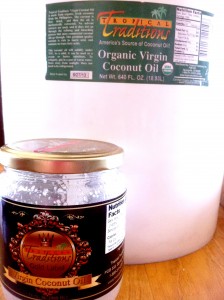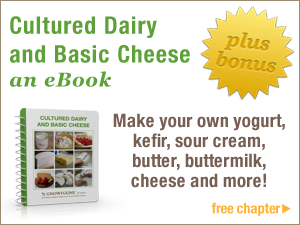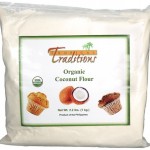Perhaps you’ve been eating real food for a while now, and yet somehow things are not feeling quite right still. This was the case with KerryAnn at Cooking TF when she dealt with several serious health problems while faithfully consuming a REAL food diet. Though she loathed the thought of having a digestive disorder and giving up certain foods, she couldn’t help but wonder if giving up gluten could help her regain her health.
Thankfully, after a long battle KerryAnn has completely regained her health and the health of her children by figuring out their allergies and going through the long process of healing. They still consume a traditional diet in the style of Weston A. Price, only they avoid gluten and dairy.
Recently, we have had to deal with a similar scenario in our own house. My husband had been eating a traditional REAL foods diet for a while and had already seen benefits with weight loss and some fatigue, but some health issues seemed to linger anyhow. He always felt as though he were in a fog, couldn’t think clearly, had pain and numbness in his hands and feet, had trouble taking full breaths and was always tired. Come to find out, my husband is gluten intolerant and many years of unbridled gluten consuming has set off a chain reaction of other symptoms and underlying deficiencies.
KerryAnn has put together a clearly outlined approach for becoming gluten-free or dairy-free (or both) while still consuming REAL foods in the Cooking Traditional Foods GF and CF eCourse. This course has been the support and guidance we needed to make sure my husband is on the sure path to healing. I am so thankful she has put together this comprehensive course to make the journey easier on us and others.
Get sneak peek of the course by watching this complementary overview video which discusses where to find gluten and its (often secret) ingredient names from the Gluten-Free, Casein-Free eCourse.
What Do You Get?
The GFCF eCourse consists of 85 videos, 18 Menu Mailers and 11 eBooks all chock full of helpful hits, tips and strategies. Your membership includes permanent access to all of the materials. As long as Cooking TF is around, you will be able to access the class.
Enter the giveaway below for a chance to win membership to this eCourse. If you don’t win or just want to get started now, you can use coupon code EATNOURISHING for 15% off the regular cost of $149. That makes it only $119. KerryAnn has even included the option to break the enrollment cost into three payments. Note: coupon code only applies to the first payment if you go with the payment plan.
WINNER: Entry #449, Ida Koller! Congratulations! Thanks to all who entered!










